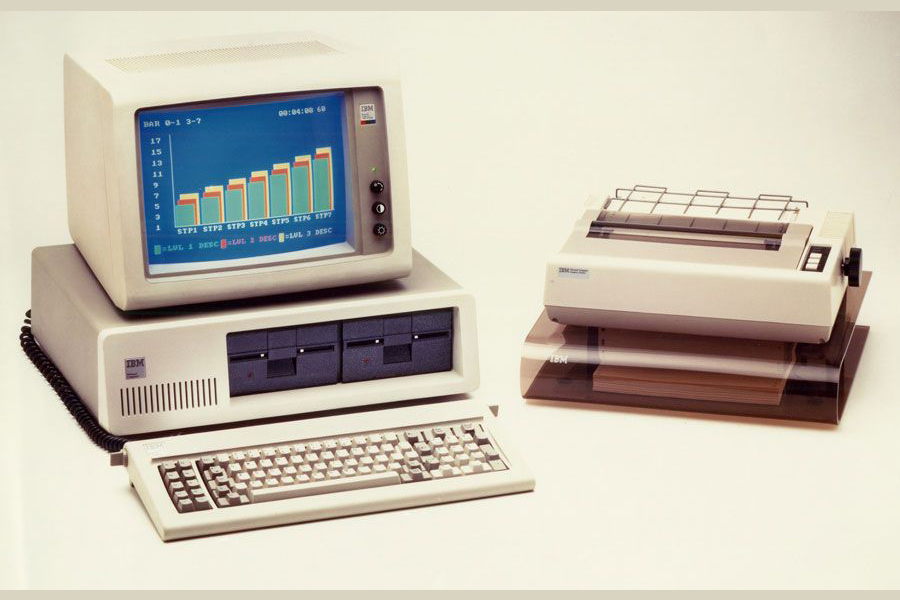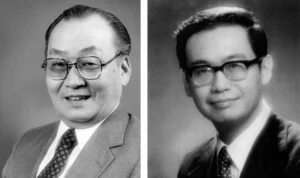Introduction
On August 12, 1981, IBM unveiled its groundbreaking creation, the IBM 5150 – a personal computer that would forever change the course of technology and how we interact with it. Initially projected to sell around 241,683 units in the first five years, the IBM 5150 exceeded all expectations by selling over 3 million units in just two years. This unexpected success not only cemented IBM’s place in computing history but also laid the foundation for the widespread adoption of personal computers and the birth of the home computer revolution of the 1980s.
Initially projected to sell around 241,683 units in the first five years, the IBM 5150 exceeded all expectations by selling over 3 million units in just two years.
The IBM 5150’s Remarkable Features
The IBM 5150 was released in 1981, at a time when the personal computer market was still in its infancy. There were a number of other PCs on the market at the time, but they were all relatively expensive and difficult to use. The IBM 5150 was different. It was priced affordably, it was easy to use, and it was compatible with a wide range of software.
These factors made the IBM 5150 an instant success. It quickly became the standard for business PCs, and it also found a large audience among consumers. The IBM 5150’s success helped to spur the growth of the personal computer industry, and it paved the way for the development of the modern PC.
It marked a significant departure from its predecessors in terms of size, affordability, and user-friendliness. Its open architecture was a key differentiator, allowing third-party companies to create compatible hardware and software. This crucial aspect democratized personal computing, making it accessible to a broader audience and fueling its rapid growth.
Also Read: Steve Jobs: The Man Who Changed Semiconductors Without Even Trying
Key Specifications:
- Processing Power: The IBM 5150 was powered by the Intel 8088 microprocessor, operating at 4.77 MHz. Though modest by today’s standards, this processor was a powerhouse at the time, providing sufficient performance for a variety of tasks.
- Memory: With an initial memory of 16 KB (expandable to 64 KB), the IBM 5150 could handle more complex applications than its predecessors. This improved memory capacity paved the way for enhanced multitasking and broader software capabilities.
- Storage: Equipped with a 5.25-inch floppy disk drive, the IBM 5150 allowed users to store and retrieve data more efficiently. An upgrade option to a hard disk drive further expanded storage capacity, enabling users to handle larger files and run more demanding software.
- Operating System: The IBM 5150 came pre-loaded with the Microsoft Disk Operating System (MS-DOS). This user-friendly interface simplified interactions and facilitated a smoother learning curve for newcomers to the world of personal computing.
- Affordability: The base model of the IBM 5150 was priced at $1,565, making it more accessible to a wider range of individuals and businesses. This affordability was a game-changer, as it brought personal computing within reach of a larger audience.
It was the first PC to gain widespread adoption by businesses and consumers, and it helped to create the standard for personal computers that is still used today.
Impact on the Personal Computer Industry
The impact of the IBM 5150 on the personal computer industry cannot be overstated. Its success led to the creation of a mass market for personal computers, propelling the home computer revolution of the 1980s. This revolution transformed computers from being predominantly used by businesses and institutions to becoming an integral part of households.
The open architecture of the IBM 5150 encouraged competition and innovation in hardware and software development. This, in turn, fostered an ecosystem of compatible products, resulting in a thriving industry that continues to evolve to this day. The widespread availability of compatible peripherals and software laid the groundwork for the modern computing landscape we know today.
Here are some of the specific impacts of the IBM 5150 on the personal computer industry:
It made personal computers more affordable and accessible. The IBM 5150 was priced at $1,565, which was significantly less than other PCs on the market at the time. This made it possible for businesses and consumers to adopt personal computers on a much larger scale.
It helped to create a standard for personal computers. The IBM 5150’s open architecture allowed other companies to create compatible products, such as add-on cards and software. This created a thriving ecosystem of personal computer products, which helped to drive innovation in the industry.
It helped to establish Microsoft as a dominant player in the software industry. The IBM 5150 came with Microsoft’s MS-DOS operating system, which helped to make Microsoft the leading provider of software for personal computers.
Conclusion
The unveiling of the IBM 5150 on August 12, 1981, marked a pivotal moment in the history of computing. Furthermore, its revolutionary features, including open architecture and affordability, played a crucial role in democratizing personal computing. Consequently, this significantly shaped the industry’s trajectory and ignited a home computer revolution.. The IBM 5150’s legacy lives on through the thriving ecosystem it helped create, as well as its enduring influence on the technology that powers our modern world.








